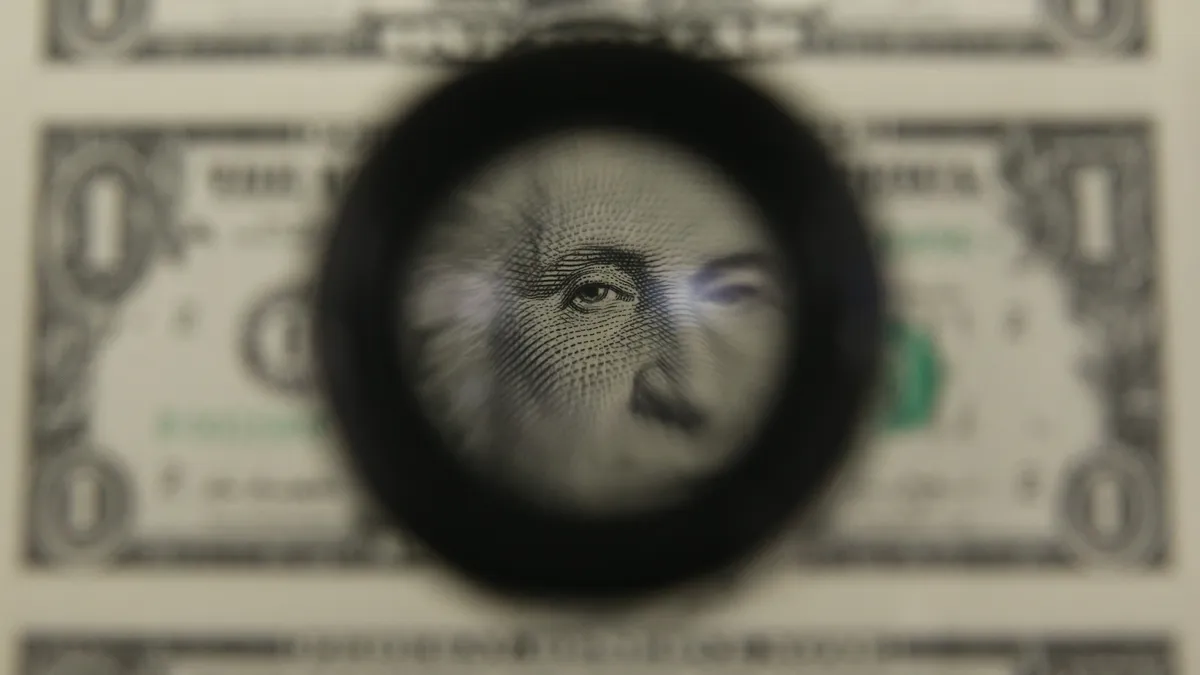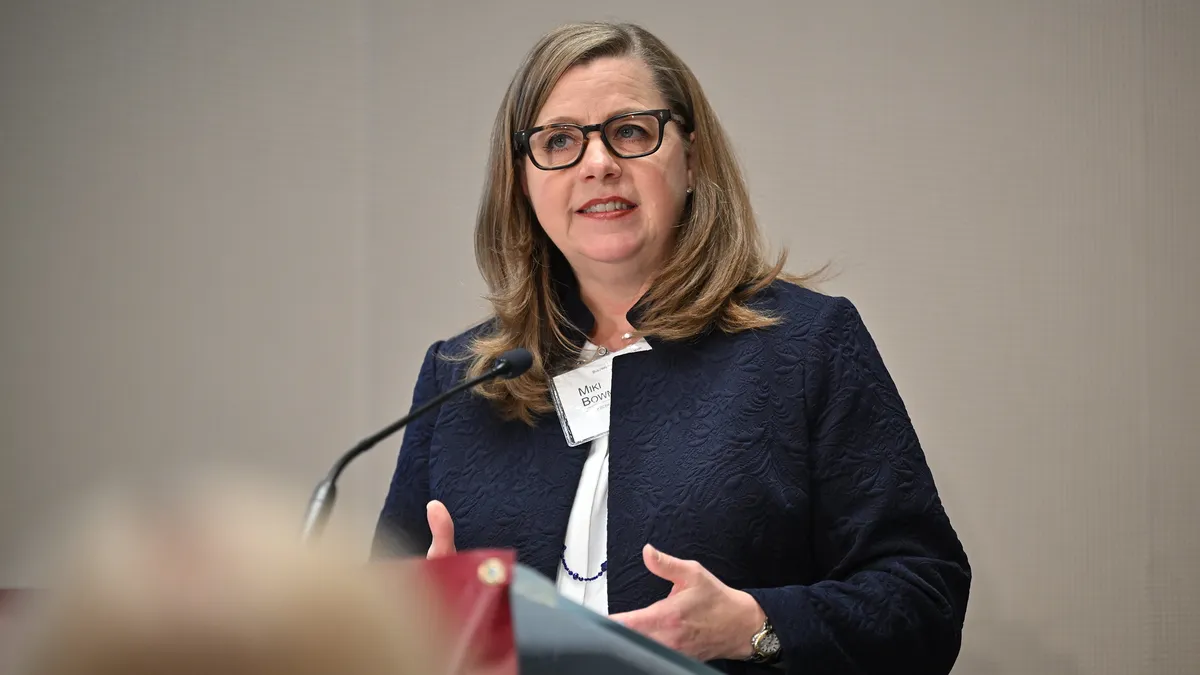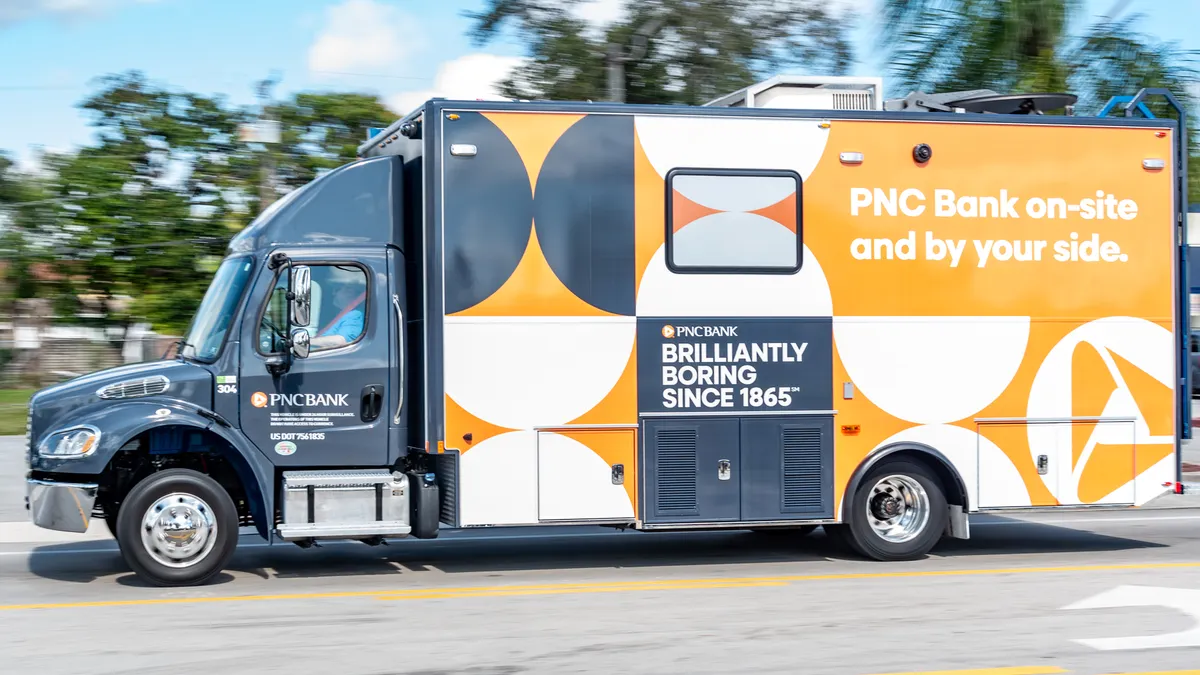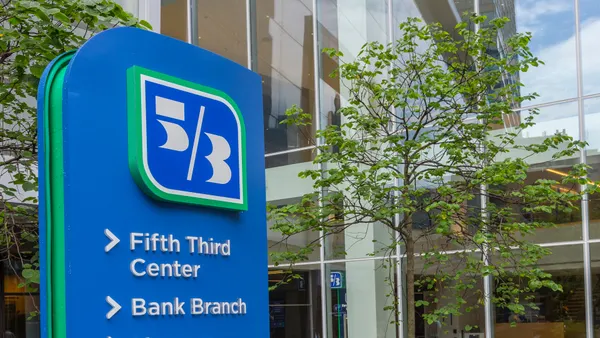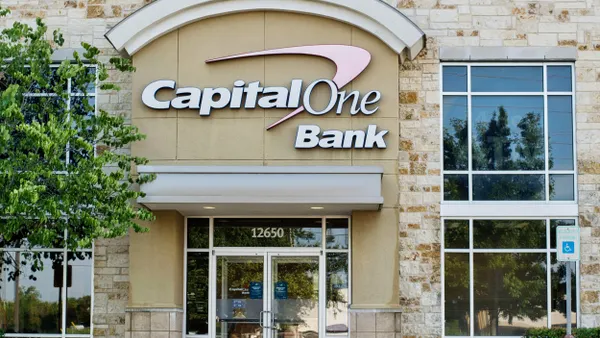Dive Brief:
- Banks took in nearly 40% more in overdraft fees in 2021’s second quarter than they did in the same three-month span a year earlier, S&P Global Market Intelligence reported Wednesday.
- However, that total — $1.97 billion — is still 32.8% less than banks lined up in 2019’s second quarter. The banking industry saw a dip of around 50% in overdraft fees during the first half of 2020 as consumers spent markedly less during the COVID-19 pandemic’s early days, S&P Global said.
- The uptick comes as several banks have launched products meant to serve as overdraft alternatives, or have eliminated the fees altogether. A pair of congressional hearings in May furthered the fees’ status as a hot-button issue.
Dive Insight:
Banks earn a median of 1.3% of their operating revenue from deposit service charges, according to S&P Global. Three of the nation’s four largest banks took a higher percentage than that in the 12 months between July 2020 and June 2021, the S&P research outlet found.
Bank of America took the most, $2.37 billion in that time frame, accounting for 3.7% of the bank’s operating revenue. JPMorgan Chase was second by amount, with $2.35 billion — for 2.1% of the bank’s operating revenue. Wells Fargo took in $1.94 billion (3.1%). By comparison, Citi’s $233 million in deposit service charges accounted for 0.4% of the bank’s operating revenue — although Citi’s consumer banking footprint is far smaller than its three largest competitors.
Among banks with more than $100 million in assets, TD Bank and Regions Bank — at 8.9% and 6.6%, respectively — took the greatest percentage of their operating revenue from deposit service charges.
However, both of those banks appear to be weaning themselves off of overdraft fees. TD in June introduced a deposit account that comes with no minimum daily balance requirements and doesn't allow customers to overdraft.
"Given the natural decline in fee revenue due to COVID-19 and the bank's accommodation to customers, we expect to see further fee revenue impact as we re-evaluate how to best serve our customers," Stephanie Cristino, a TD spokesperson, told S&P Global in an email.
The bank’s overdraft practices have landed it in hot water twice in the past year. TD in May settled a $41.5 million class-action lawsuit after customers alleged it charged them overdraft fees for each attempt merchants made to process the same transaction. The Consumer Financial Protection Bureau (CFPB) in August 2020 ordered the Canadian lender to pay $122 million in restitution to more than 1.4 million customers over "deceptive" overdraft enrollment practices between 2014 and 2018.
Regions, by comparison, told investors last week it planned to launch a no-overdraft checking account in the third quarter, S&P Global reported.
Texas-based Woodforest National Bank, at 30.6%, took the highest percentage of its operating revenue from deposit service charges among banks with $1 billion or more in assets, according to S&P Global’s data.
About 52% of U.S. adults said they believed overdraft fees are an unfair penalty that disproportionately affects underprivileged consumers, according to data from a survey published by Morning Consult in June. The other 48%, meanwhile, said they believed the fees are a fair charge for a convenience offered by a bank when a consumer spends beyond their means.
Several lawmakers in the past months have taken public stances against overdraft fees. Rep. Carolyn Maloney, D-NY, last month introduced her Overdraft Protection Act, which would prevent banks from charging a customer more than one overdraft fee in any calendar month, and would limit to six the number of overdraft fees a bank can charge a customer per year.
Before leaving office Tuesday, now-former New York Gov. Andrew Cuomo signed a law requiring New York-regulated banks to process checks in the order they are received, or from smallest to largest, to prevent customers from racking up fees for overdrawing their accounts.
Sen. Elizabeth Warren, D-MA, in May took JPMorgan Chase CEO Jamie Dimon to task at a Capitol Hill hearing for the reported $1.5 billion in overdraft fees his bank collected during the COVID-19 crisis. Dimon called Warren’s numbers "totally inaccurate,” and the bank responded that it waived more than $430 million in overdraft fees at customers’ requests between January 2020 and March 2021.
A number of banks have launched overdraft alternatives this year. San Antonio-based Frost Bank, for example, introduced a feature in April allowing customers to overdraw their checking accounts on transactions up to $100. The bank then followed up in July with a product allowing early wage access. Capital One and Fifth Third Bank have similarly introduced early access to direct deposits.
Columbus, Ohio-based Huntington Bank in June launched a digital-only loan product that would give eligible customers immediate access to a line of credit up to $1,000 with no interest or fees if they sign up for automatic payments.
PNC revised its overdraft policy and introduced "low cash mode,” which gives customers a 24-hour buffer to prevent or address overdrafts before fees are charged.
Ally Bank took its revamp of the overdraft model a step further. After waiving overdraft fees between March and July 2020, the bank decided to eliminate the fees in June. Alliant Credit Union this month similarly eliminated the fees.



